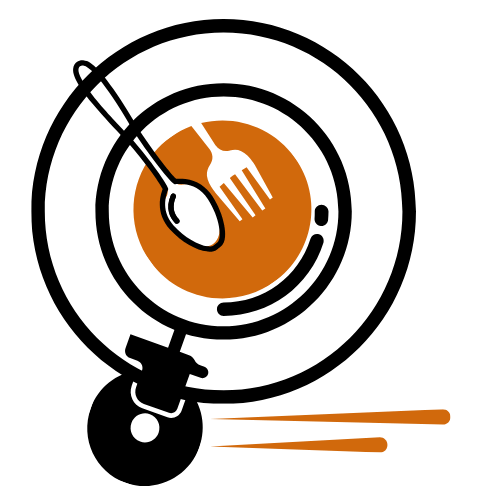bodybuilding & Fitness
The definitive guide to the abdominal muscle’s anatomy
There is a query that is frequently on the minds of many individuals: what is the detailed anatomy of the abdominal muscles? All bodybuilders must understand this question because it helps during exercise.
Consequently, we have provided a comprehensive and detailed explanation of the morphology of the abdominal muscles on our website, Golden Form. My dear friend, all you need to do is thoroughly peruse the article. You will surely derive the greatest benefit from the abundance of exceptional information that will be shared at this time.
Abdominal muscle anatomy in detail
The abdominal muscles are a critical component of the human body. While some individuals perceive them as intricate and numerous, in contrast to uncomplicated muscles that are more easily comprehensible, such as the biceps and chest muscles, this article will provide a straightforward explanation.

1. Rectus Abdominis
The abdominal muscles are composed of numerous muscles, with the fundamental six-pack being the most important. This muscle extends from the pubic symphysis to ribs 5, 6, and 7. The muscles are partitioned into a right and left side by a robust white ligament, which is composed of collagen known as Linea Alba and runs vertically.
The rectus abdominis’s most critical components
Additional ligaments, also known as tendinous inscriptions, further divide the abdominal muscles horizontally. Genetics is the primary factor that determines whether an individual has 4, 6, or 8 packs, which is why these ligaments are strong in some and feeble in others.
Multiple ligaments divide the rectus abdominis muscles, which are a singular muscle. These ligaments are responsible for altering the shape of the abdomen and vary from person to person. It is genetic, and there is no way to achieve six or eight packs through exercise or hormones.
Function of the Rectus Abdominis muscle
Although it is a singular muscle, it is feasible to target the lower abdomen (lower rectus abdomins) with numerous exercises, as well as the upper abdomen (upper rectus abdominis) with additional exercises.
The spine bends during the abdominal press exercise, drawing the ribcage closer to the pubis. These phenomena are exceedingly challenging to observe or comprehend, with the exception of abdominal muscle dissection.
2. External abdominal obliques muscle
Among the most significant dissections of the abdominal muscles are the side muscles, the largest superficial muscles in the abdomen. They originate from ribs No. 5 to 12 and terminate in the Linea Alba and pubic tubercle. Also known as the side muscles. Because of their overlap, the fibers that are associated with the serratus anterior and dorsal form an oblique line on the lateral side of the thorax.
The most critical components of the External Abdominal Oblique
Muscle fibers extend toward the middle and lower extremities of the abdomen, with the majority of the posterior fibers running vertically and the remaining fibers running anteriorly and medially.
This muscle’s most critical components are as follows:
- Nerves: The anterior branches of the thoracic spinal nerves innervate the upper portion of the external oblique, while the subcostal nerve innervates the lower portion.
- Blood supply: The posterior inferior arteries, which are subcostal, supply the upper two-thirds of this muscle with blood, while the deep iliac artery supplies the lower third.
Function of the External Abdominal Obliques
The external oblique muscle of the abdomen serves a diverse range of functions, regardless of whether it contracts from a single side or multiple. In conjunction with the internal oblique, it rotates the trunk to the opposite side and aids in lateral flexion on the same side.
You may also be interested in the following: The eight most effective core exercises for sculpting the body and strengthening the core muscles (update).
3. Internal Abdominal Oblique
Since this muscle is not visible or superficial, observing it requires dissection of the abdominal muscles. The source of this muscle is the Lumbar Fascia, a group of connective tissues in the lower back that terminate at the bottom of the ribcage and the pubic bone. It is located behind the External Obliques.
The Internal Abdominal Oblique comprises the most crucial parts.
Numerous fibers, divided into three groups, compose the muscle:
The iliopectineal arch is shared by the iliac fascia and the anterior fibers. It is a depth that includes the top two-thirds of the inguinal ligament on the side.
The anterior two-thirds of the iliac crest are the origin of lateral fibers, which diverge upward. The fibers then extend into the peritoneum, where they help to form the rectus sheath and enter the linea alba.
The posterior extremity of the iliac crest and the pectoral fascia, located in the lumbar region, are the sources of posterior fibers. The fibers rise above the sides and are located in the lower borders and extremities of the lower three or four ribs, along with their respective cartilages.
4. Muscle of the transverse abdominis
Additionally, behind the internal oblique muscles are muscles known as TVA, which are not visible or palpable. On the lateral surfaces of the abdominal wall, the abdominal muscles form a wide, double muscle sheet.
This is clearly revealed when the muscles are dissected. They also sit next to the abdomen’s external and internal obliques, encircling the lateral abdominal muscles. These muscles, in conjunction with the rectus abdominis muscles, constitute the anterior lateral abdominal wall.
The fibers of the transverse abdominis are perpendicular to the linea alba and directed transversely. The transverse abdominis, in conjunction with other abdominal muscles, are responsible for maintaining normal abdominal tension and elevating intraabdominal pressure.
They are essential for maintaining abdominal muscle pressure, core stability, and pelvic and respiratory balance. These are the muscles that contract when you wheeze.
A detailed dissection of the abdominal muscles reveals that
Numerous locations illustrate the following:
- The lateral third and the iliac fascia attached to it form the upper surface of the inguinal ligament.
- The anterior two-thirds of the iliac crest contain the inner border.
- The pectoral fascia is located between the iliac crest and the 12th rib.
- We examine the interior surfaces and cartilages of the lower six ribs.
- The transverse abdominal fibers are perpendicular to the linea alba and extend over the lateral abdominal wall, directing them toward the midline.
The transverse abdominis muscle receives arterial blood from the following arteries:
- The descending thoracic artery is the source of the posterior inferior intercostal arteries.
- The descending thoracic artery gives rise to the subcostal arteries.
- The internal thoracic artery is the source of the superior epigastric artery.
- The external iliac artery gives rise to the inferior epigastric and deep arteries.
- The superficial artery is a branch of the femoral artery.
- The posterior lumbar arteries originate from the abdominal aorta.
Function of the Transverse Abdominis
The transverse abdominis muscles play an important role in maintaining normal abdominal wall tension. Consequently, these muscles play a substantial supportive function by maintaining the abdominal organs in their proper position. Furthermore, the insufficiency of the transverse abdominis or other abdominal muscles increases the likelihood of developing an abdominal hernia.
The lateral abdominal muscles, including the transverse abdominis, also exert pressure on the abdomen’s viscera, resulting in an increase in intraabdominal pressure. This procedure facilitates expulsion functions such as forced exhalation, urination, defecation, and the final phases of childbirth.
5. Pyramidal Muscle
This muscle, triangular in shape, connects to the anterior abdominal wall and occupies both sides of the white line. Dissecting the abdominal muscles of this muscle clearly reveals its identity. It is located next to the rectus abdominis muscles and forms a part of the anterior abdominal muscle group. The anterior lateral abdominal wall, comprising the external oblique, internal oblique, and transverse abdominal muscles, encompasses these two muscles in a broader sense.
The muscle’s function
This pyramidal muscle is responsible for tightening the white line, a process that lacks any function when carried out independently. However, the pyramidal muscle contributes to a variety of abdominal wall functions, such as increasing pressure on the abdomen, by collaborating with the other abdominal pressure.
The pyramidal muscle, which is responsible for the white line, typically contracts in conjunction with other abdominal muscles, increasing positive pressure on the abdomen and contributing to the contraction of the abdominal wall.
The abdominal muscles’ contraction serves as a crucial defense mechanism, as it physically safeguards the abdominal organs. The second function is to facilitate certain physiological processes, including forced respiration, singing, and urination.
The muscle’s most critical components
The nerves reach the pyramidalis muscle through the subcostal, the anterior branch of the spinal nerve.
- Blood supply: The pyramidalis muscle receives blood from the branches of the inferior epigastric artery, which is also known as the inferior epigastric artery.
